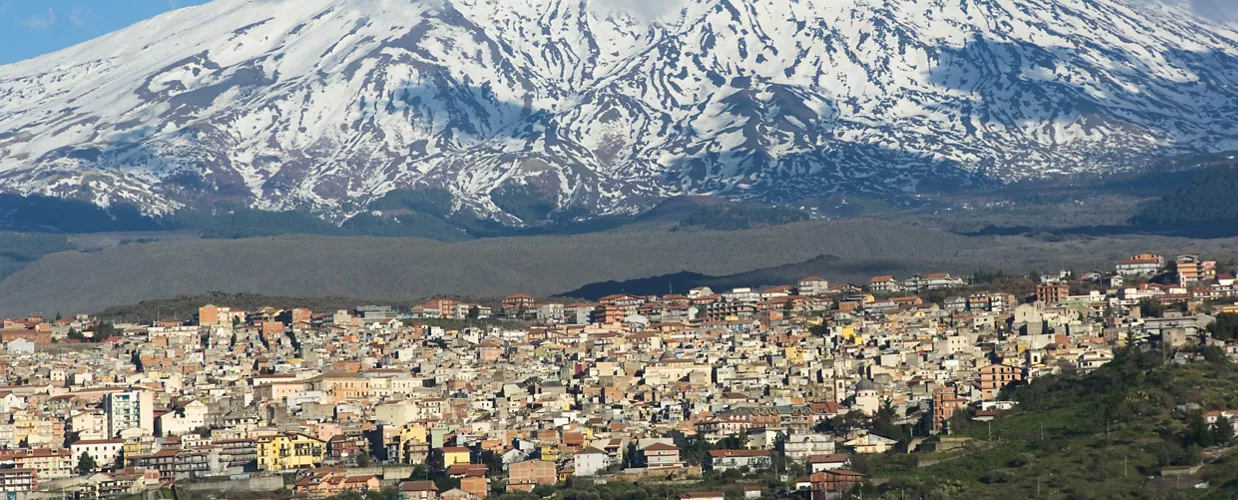This content was automatically translated. View the original text.

Overview
Colourful houses leaning against each other stand out against the brown colour of the lava rocks, while rows of trees draw meandering lines on the hills that fade into the horizon.
This is the scenario that greets us when, coming from Catania, we begin to glimpse the steep slope, overlooking the Simeto river valley, where Bronte rises.
Situated between nature reserves and parks such as the Etna Park, the Nebrodi Park and the Serra del Re Reserve, the Bronte area boasts a rich production of citrus fruits, cereals, olives and almonds. Worthy of special mention are the excellent pistachios that, due to the unique characteristics of the area, have earned recognition as DOP (Protected Designation of Origin). The cultivation of this fruit, introduced by the Arabs, is one of the most important activities in the area and gives rise to a famous festival that also attracts tourists from abroad.
The Arab origin of the village is evidenced by the structure of the historical centre with its narrow, winding alleys, recurring steep staircases, courtyards and subways.
Its name derives from the Greek word for roar and recalls the town's connection with nearby Mount Etna. Around 1520, King Charles V favoured the enlargement of the village by relocating the inhabitants of the neighbouring districts and placing it under the jurisdiction of the Monastery of Maniace. Destroyed several times by volcanic eruptions, it was ceded to General Horatio Nelson in 1799.
The Colleggio Capizzi built in the 18th century in Baroque style, the 16th-century Mother Church dedicated to the Trinity, the Renaissance Church of S. Giovanni of 1580 and the Church of the Annunziata, built in 1535, which features a splendid sandstone portal, are all worth a visit.
95034 Bronte, Catania, Italia